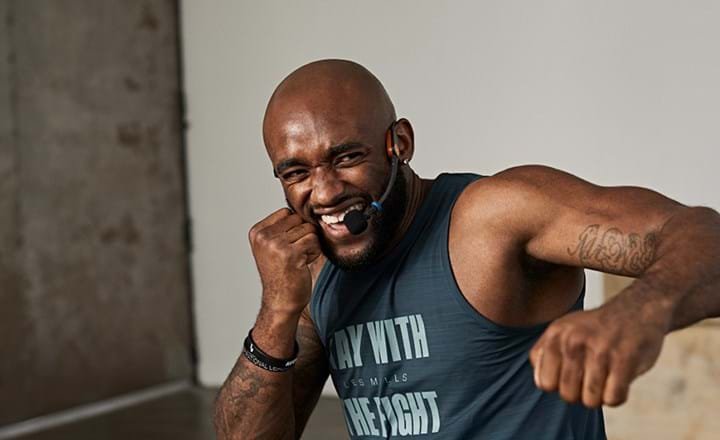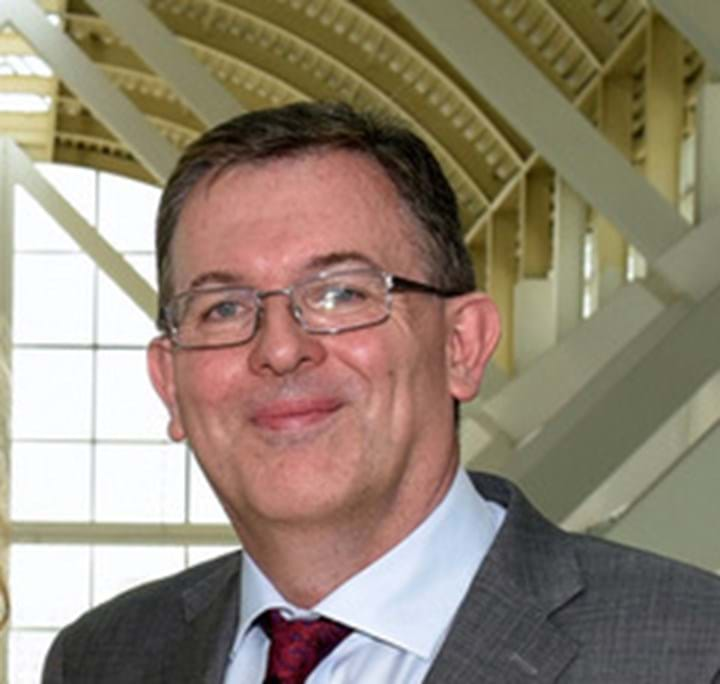
Tell us about the Global Health & Fitness Alliance (GHFA) Kilian?
Kilian Fisher: The purpose of the GHFA is to create one collective voice for our industry that can have an impact on the world stage and ensure physical activity is a cornerstone of global health policy.
It was founded in November 2020 by IHRSA in response to growing calls from fitness leaders for a global voice that can promote the industry’s vital contributions to health and wellbeing, facilitate credible evidence to underpin this, and drive policies that support more people to be active.
IHRSA represents an industry with well in excess of 200,000 fitness facilities globally. The GHFA comprises industry leaders at C-level representing more than 80 health clubs, suppliers, national industry associations across the world (see the full list), who meet virtually at least six times per year, as well as through supplementary working groups. IHRSA has committed staff resources to support the GHFA – this includes my role as GHFA Coordinator, as well as assistance from John Holsinger and support from a number of the IHRSA Executive Team and other staff.

How does it differ from IHRSA?
GHFA and IHRSA are similar in the sense that they both lobby and advocate on behalf of the fitness sector, but the differences are around scope, purpose and make-up. So IHRSA is a membership body which lobbies US Congress and advocates across a broad range of areas, as well as providing services to members and non-members across the Globe, whereas GHFA is a bespoke alliance focused on elevating the role of physical activity in global health policy. And with that specific remit, it means that GHFA can bring together strong representatives from each region into active networks and focus groups dedicated to advancing specific strands of our overall mission, such as research or strategy development. So we have broad representation from industry leaders across each region – comprising both operators and suppliers – and it’s open to everyone, both IHRSA members and non-members.
And what’s been the catalyst for GHFA taking shape?
It’s fair to say the COVID-19 pandemic had an effect in the sense that, in society, we’ve seen a much greater appreciation of the importance of being active to maintain our health – with people who are active enjoying far greater protection against COVID-19 than people who are not. And as governments around the world have been making huge decisions on how to promote healthy living and safeguard certain sections of the economy during the pandemic, there’s been a growing sense among fitness operators and suppliers of just how important it is to ‘have a seat at the table’ when these important decisions are being made.
Which table do we need to be sitting at to be truly heard?
There’s been a lot of debate around this, but the consensus that helped form GHFA was that although clubs have typically been seen as part of the sports and leisure sectors, the area where we can have the biggest impact is in public health. As the lead UN agency for Health, the World Health Organization (WHO) has been identified as the key area of focus for GHFA, along with UNESCO’s CIGEPS, which is an intergovernmental committee of all the world’s sports ministries and the OECD. Realistically, WHO is never going to write a blank cheque for operators to go ahead and start delivering health initiatives, but by ensuring that physical activity is a central tenet in WHO policy and is recognized as a key cog in the wheel, it then means that fitness providers at a national level will be in a much stronger position to receive grants and become frontline health delivery partners who can drive the preventative agenda.
![]()
What progress has been made so far?
One thing not everybody realizes is that IHRSA already has somewhat of a seat at the table when it comes to WHO, UNESCO and OECD, so the question has really flipped to being ‘Given that we have this seat, what do we as an industry want to bring to the table under the banner of GHFA?’ As part of this, we collaborated recently with the WHO on a virtual forum between the WHO and key stakeholders from across the physical activity sector called ‘Ready for change: the future of sport, exercise and fitness’. This was a landmark meeting where our sector could have its say on future WHO policy and the role that physical activity should play in improving global health. The meeting was significant because it will help to shape not just WHO policy, but this in turn will influence the policies of federal national state governments who look to WHO for guidance. And by speaking as one collective voice through the GHFA, it enables us to have more of these conversations ‘at the table’ and wield greater influence both globally and at national level. Now it's not going to happen overnight, because public policy never does, but this represents strong progress and provides foundations which we can now build on.
What are the next steps?
A number of things. It’s about pushing ahead with our research and advocacy work which I’ll come onto. It’s about driving forward our collaboration with the WHO to shape global health policy, but it’s also about broadening awareness among physical activity providers of what opportunities are out there already and helping them to strike while the iron’s hot. The WHO’s Global Action Plan on Physical Activity sets out a range of policy actions to help countries promote physical activity and there are numerous ways fitness providers can align to these and position themselves as delivery partners.
If we can crack that part of the puzzle then the potential rewards are huge. We’re talking about moving well beyond the 20 percent of the population that currently use our facilities and reaching the broader 80 percent – that’s when we can truly make a difference. The goal is to make fitness an essential component of public health, but if we want to be essential then we have to be inclusive.
So what do we as fitness providers need to change about our approach?
It’s fine to maintain current offerings and help the fit get fitter, but we also need to go well beyond that, developing programs and messaging that speak to the wider population and make our facilities more inclusive. This spans across age, gender, ethnicity, religion, physical ability and ensuring we’re doing everything we can to make people feel welcome and accepted. For operators – particularly as they work to rebuild their businesses after the pandemic – this can feel daunting and overwhelming, but the point is that it doesn’t need to happen tomorrow. It might take 10-20 years to fully achieve this – but we have to start today and set out with purposeful intent to broaden our appeal, as that’s the key to becoming an essential component of public health and going truly mass market.

What are GHFA’s main policy calls?
There are two key pillars. One is really building on the appreciation of physical activity that we’ve seen through the pandemic and getting this baked into global health policy with tangible actions. At the moment, if you speak to doctors or policymakers, they’ll all say that physical activity is really important, but when it comes to policy discussions around mental health or heart disease, exercise barely gets mentioned. So it’s effecting a sea change whereby policymakers go from talking the talk, to actually walking the walk, whereby physical activity is truly integrated into global policy for preventing disease and keeping people healthy.
The second is demonstrating the primacy of fitness facilities in delivering physical activity to the whole population. Another thing we’ve seen during the pandemic is policymakers saying that you can get active in a number of ways outdoors and you don’t actually need fitness facilities. What we’re saying is you absolutely do need facilities to help people get active and stay active, and here’s why. So a large part of our work is building the evidence for an irrefutable case as to why facilities that support physical activity – and we’re talking right across the spectrum here of gyms, sports clubs, swimming, outdoor facilities – are an essential part of health delivery.
What sort of research will that entail?
We need to prove the economic value of our sector and the impact our facilities have on all aspects of society – including buildings, staffing, health, social capital and other areas – so we’re about to kick off a global study with Deloitte to evidence this. It’s really exciting because it's the first time ever that this kind of research has been done. And what’s equally exciting is the collaboration we’re seeing from club chains around the world who want to work together on this, provide funding and insights to support it, and ultimately enable our sector to be heard loud and clear by speaking as one powerful voice. The GHFA has now secured funding from key club operators and suppliers to conduct the first ever Global Economic Impact Study for our industry. Two leading research companies are involved (Ken Research and Deloitte). We are still open to further contributions to add more countries into the study (for details, email: kfisher@ihrsa.org)
How can fitness professionals play their role?
Everyone has a role to play in this and we’ve set up a structure where industry leaders represent different regions and bring forward ideas, views and feedback from their constituents. So anyone can contact their local representative to ensure that their voice is heard and has the chance to inform GHFA activities.
We want to make sure we have genuine industry leaders representing these groups, bringing the right balance of experience and geography. That means that we can’t have everyone in the mix as it would defeat the purpose of having small working groups of representatives that can move forward at pace. That said, there are still spaces for people to represent certain countries or regions, and if people feel they’d be the right person for the role they should visit this link to check out the eligibility criteria and decide if they want to apply.
The purpose of GHFA is also to work in collaboration with existing representative bodies, so as an example, ICREPs (The International Confederation of Registers for Exercise Professionals) is one of our members. So any Instructor or Trainer who’s a member of their national REPs body can have their say and contribute through those forums to put forward ideas.
WANT TO JOIN THE GHFA MISSION?
Find out more about the alliance's goals and whether you should apply to become a GHFA representative.
JOIN GHFA